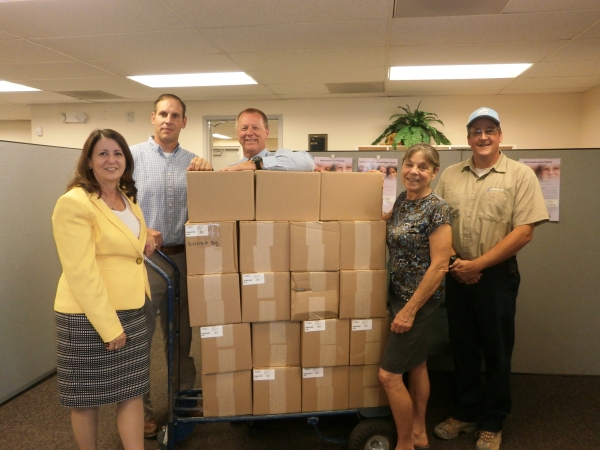Utilities Inc. works to promote water conservation with school children
As the drought continues to plague the state, Nye County and utility officials are trying to educate some of the county's youngest residents on water conservation.
Promoting understanding of water resources among first and second graders in Nye County is a coordinated effort between the Southern Nye County Conservation District, Utilities, Inc. of Central Nevada and the Nye County Water District, said Judy Gillmore, water conservation coordinator at Utilities, Inc. of Central Nevada.
"For the second year, we provided schools with the water conservation materials. Puzzles, mazes and water smart erasers and rulers, all that kind of thing," Gillmore said.
Gillmore said 750 educational packets were delivered to the Nye County School District office last week for distribution to first and second graders in Nye County.
"Many of the children in Nye County, particularly Pahrump, came from cities where the water just comes out of the faucet. Especially the younger ones, first and second graders really have no concept of where water comes from, and have no clue that it is a finite and fragile resource," said Donna Lamm, a member of the Southern Nye County Conservation District.
As part of the effort, officials are also arranging field trips to water use areas such as Ash Meadows National Wildlife Refuge in Amargosa Valley and developing an internship program for high school students.
"Our intention is to create and sustain conservation programs at different grade levels with age-appropriate material throughout the education system from first through twelfth grade," Gillmore said.
Additionally, Gillmore said there is a variety of scientific job opportunities related to water in the area including Death Valley National Park, the Division of Forestry and the Bureau of Land Management.
"The earlier we start an education program, the more interest the children will have in the science of this region and the more competent they will be when they enter the workforce," she said.
While water levels in portions of the Pahrump Basin continue to decline by one to two feet per year, Lamm said the best way to deal with the problem is through water conservation.
"Just like learning a new language, this is something that is best taught early so it becomes a lifestyle and is practiced automatically," Lamm said. "These children are the future leaders. I think it's important to do what we can to make sure they have a good understanding of the challenges we face in this very arid climate."

















